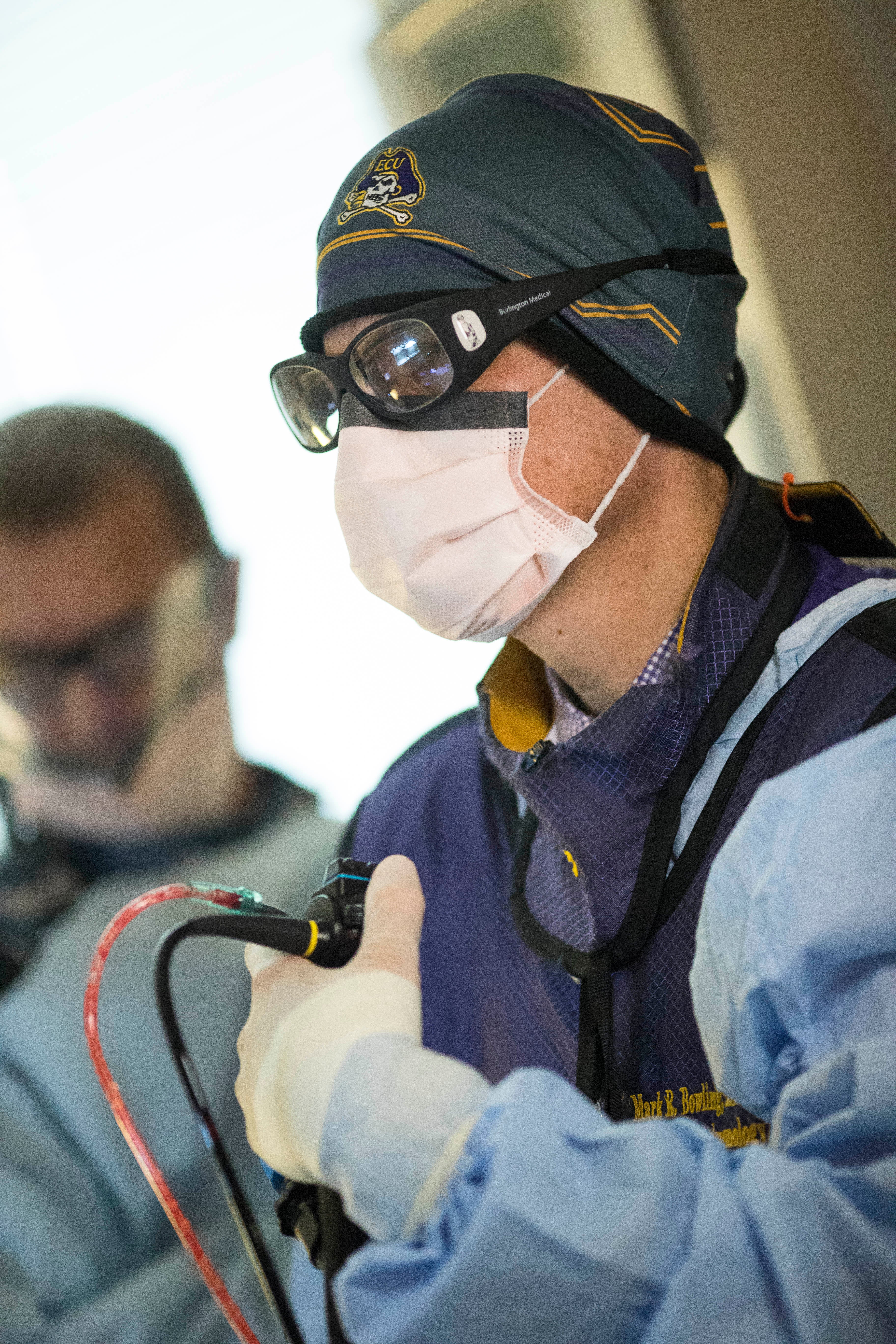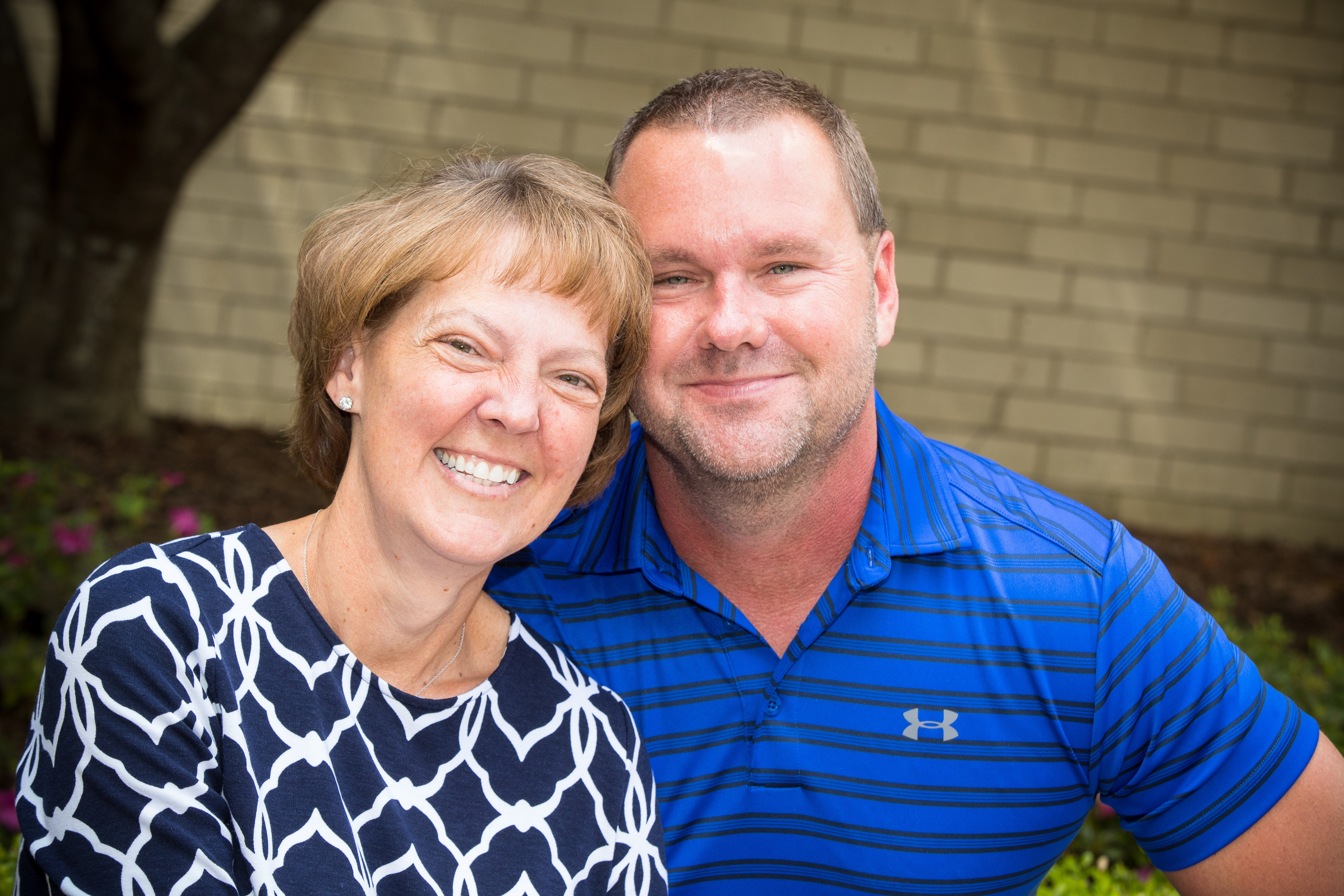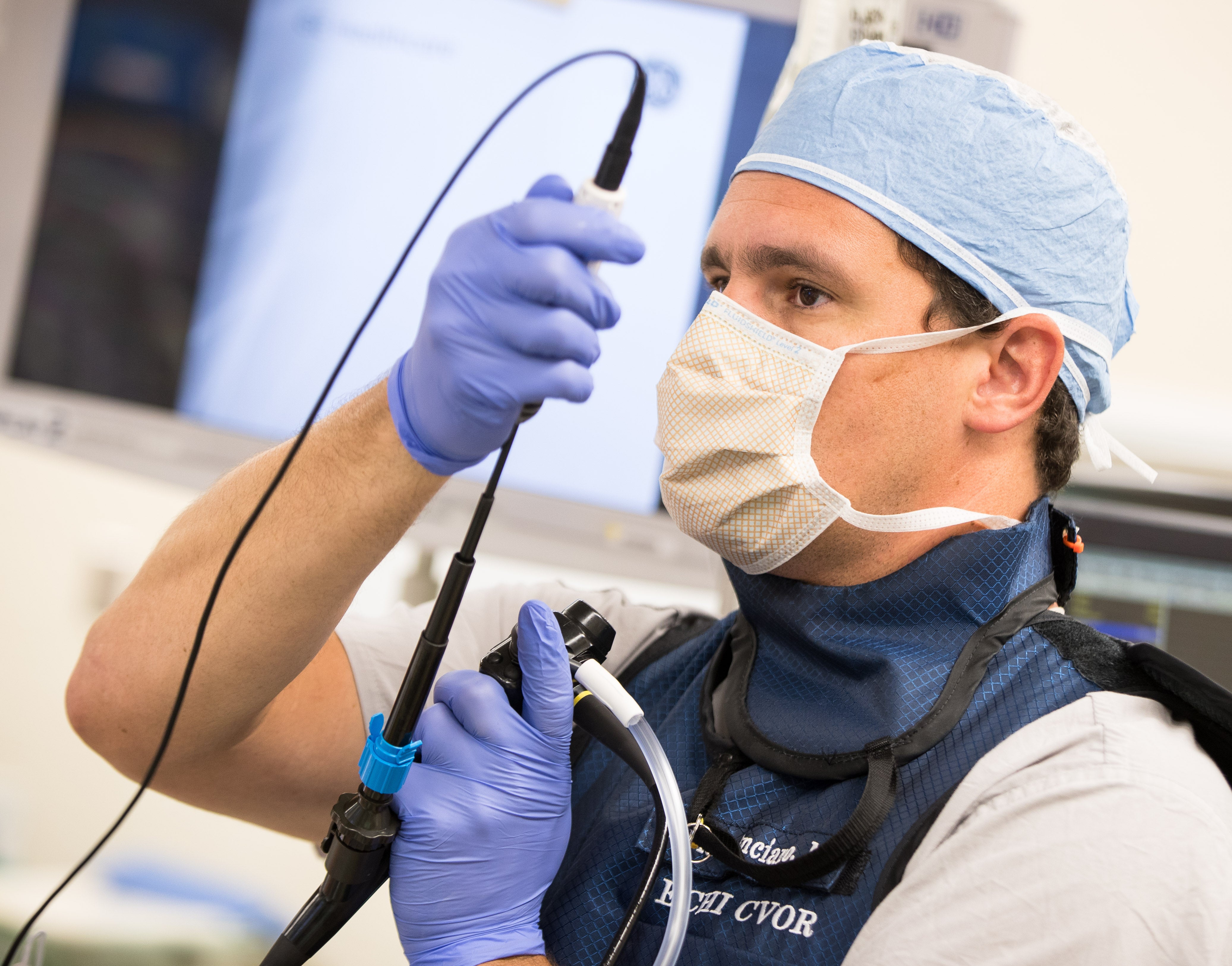FIGHTING LUNG CANCER
Physicians from several specialties join forces to battle disease
Pam Black of Greenville, North Carolina, was diagnosed with stage 4 lung cancer in 2014 and told she had six to eight weeks to live. After coming to East Carolina University’s Brody School of Medicine for treatment, she has passed the three-year anniversary of her diagnosis thanks to a unique approach taken by doctors and cutting-edge technology available at ECU.

Bowling is an international leader in electromagnetic navigational bronchoscopy. He calls ENB a “GPS” for the lungs.
ECU chief of hematology and oncology, Dr. Paul Walker, leads a multidisciplinary team approach to treating lung cancer at the Leo Jenkins Cancer Center – a partnership between ECU and Vidant Medical Center. This approach can reduce the average time between discovering the abnormality and beginning treatment from 120 days to 30.
Dr. Mark Bowling is the Walker Distinguished Professor of Clinical Oncology at ECU and director of interventional pulmonology at Vidant. He was part of the team that helped treat Pam Black. He said the faster treatment starts, the better the chance for a good outcome.
“By having this multidisciplinary approach we’re able to identify patients, see them, get the diagnosis and start treatment within two weeks,” he said.
At her first evaluation three years ago, Black learned she had advanced lung cancer and it had spread to her brain, back and liver.
“Pam’s situation was incredibly dire,” said Walker. He was very aware of the short window of time they had to act.
Battle Plan
According to Bowling, approximately 450 people die from lung cancer per day in the United States – the equivalent of a 747 airplane crashing. In North Carolina, approximately 450 people die each month from the disease.
“In our opinion, it’s a state of emergency and you better believe for that patient and their family it is an emergency,” Bowling said.
Every Thursday morning, pulmonologists, medical oncologists, radiation oncologists, surgeons and support staff meet to discuss all of their patients to devise a unified battle plan for each.
“Everybody leaves their ego at the door,” Walker said. “The reason is, the only thing that matters is that each individual you’re discussing arrives at the best possible treatment.
“What can get the best cure? What can get the best outcome? Everybody has that focus and then it’s a matter of constructing the steps of how to get there,” Walker added. “Together we’re far smarter than we are as an individual.”
“We’ve known that multidisciplinary care works for a while,” Bowling said. “There’s nothing magic about it. But we have a group of individuals who are really dedicated and believe in what we’re doing.”
The collaborative approach streamlines the patient’s care.
“From a pulmonary standpoint, each patient does not have to see Dr. Mark Bowling prior to their procedure. We can talk to them about what is expected and we can kind of move things along quicker rather than setting up multiple appointments back and forth,” said Teresa Parent, nurse navigator of thoracic oncology.
Cutting-Edge Treatment
Bowling has become an international leader in electromagnetic navigational bronchoscopy (ENB). By using a GPS-type device he can take a biopsy of a tumor and insert several gold markers to help guide radiation oncologists or surgeons in providing their treatments. Performing the biopsy and marking at the same time eliminates a second procedure, speeding up the patient’s care.
“Whatever it takes to get that patient fast, effective and cutting edge care,” Bowling said.
After the markers are in place, radiation oncologists or surgeons are better able to pinpoint the cancer to spare the healthy lung tissue.
If radiation is determined to be the best course of action, the Leo Jenkins Cancer Center has a CyberKnife robotic radiosurgery system. This machine allows the radiologist to deliver precise doses of radiation to the tumor while leaving surrounding tissue unaffected.
Walker specializes in a newer cancer treatment called immune therapy, which uses the patient’s own immune system to attack and kill the cancer. Immune therapy is sometimes used in conjunction with radiation – a combination Walker says is on the cutting edge of cancer therapy.
“Between the radiation and markers and CyberKnife and the immunotherapy and this new technology, the way we’re battling cancer now is just amazing,” said Black, who has been treated in all four of those ways.
Taking Notice
This multidisciplinary lung cancer team is being recognized on national and international stages.
Their team approach to giving each patient a personal battle plan has specialists from across the country coming to Greenville to witness it firsthand.

Pam Black has had her husband Doug by her side as she’s battled stage 4 lung cancer the past three years. She credits ECU’s multidisciplinary team approach with her progress in battling the disease.
Bowling traveled to Japan in September to present his work with ENB at the 18th World Conference on Lung Cancer. He reported the findings of two sub studies from the NAVIGATE trial, an international multicenter study evaluating ENB. One study focused on marker placement to guide radiation therapy and the other was on the use of dye marking lung nodules for surgical resection.
The team also gave four presentations last month in Chicago at the International Association for the Study of Lung cancer national conference. Included in those presentations was the benefit of combining radiation therapy and immune therapy in the treatment of lung cancer. Those presentations will be published in the Journal of Thoracic Oncology.
“It is humbling to get the national and international recognition. We just hope that by sharing our approach both patients and physicians may benefit everywhere.” Bowling said.
Other cancer disciplines at Vidant and ECU are following a multidisciplinary approach, said Bowling.
“I am convinced that our cancer care rivals the best centers in the nation, not just because of the advanced technology and facilities, but the dedication of our nurses, staff and physicians,” he said.
“Every time I see Dr. Walker, I’m filled with hope, as well as Dr. Bowling,” Black said. ‘They are just the best team of doctors that I could ever ask for. At no point have I ever felt like a number. I’ve always walked in and felt special. I’m treated with such good care,” she said.
While Black’s brain tumors have disappeared, she continues to get treatment from the multidisciplinary lung cancer team at ECU and Vidant.
“You’re only as good as the team members you work with,” said Pam Black’s husband Doug Black. “The new technology is very groundbreaking and revolutionary and it’s keeping people like my wife alive.”

